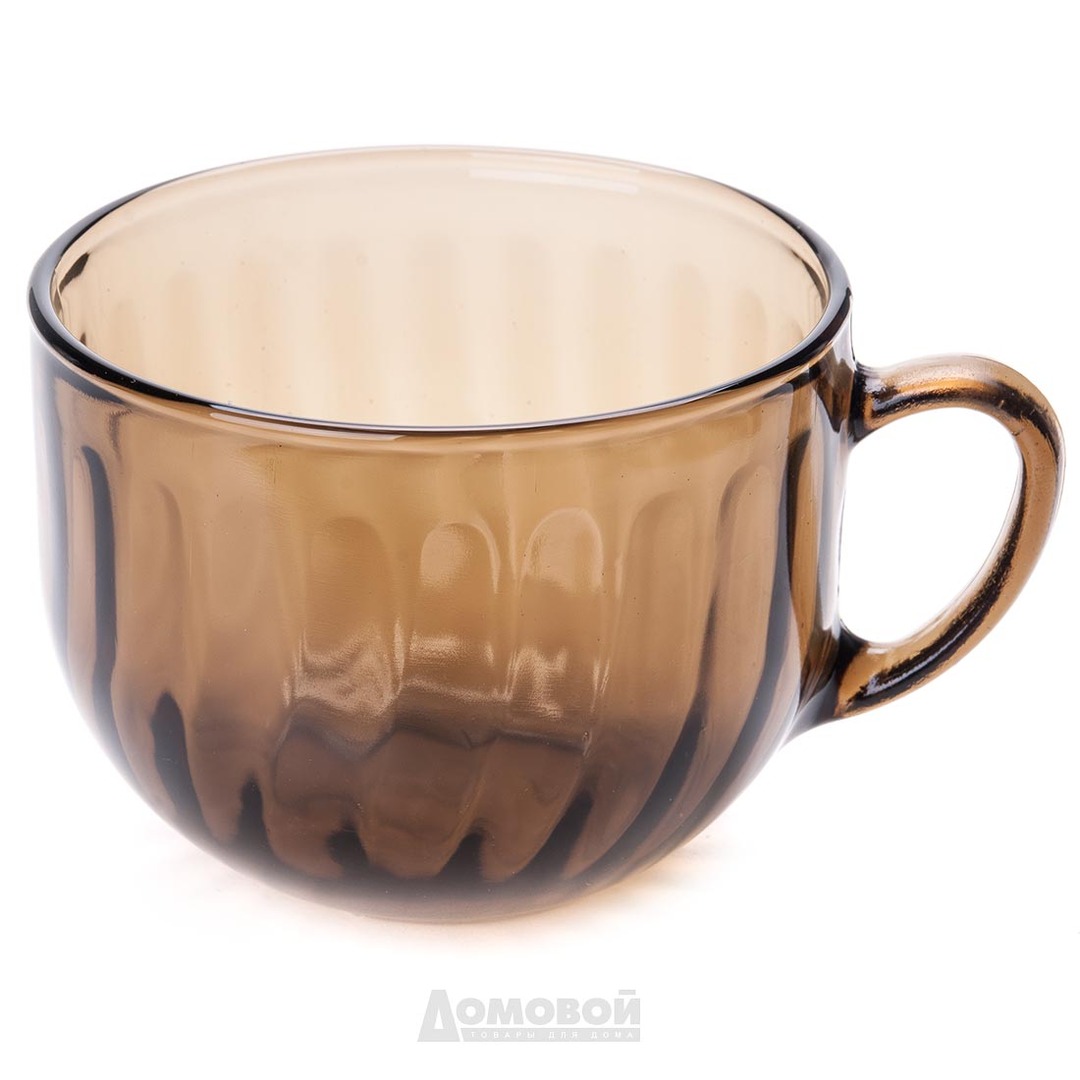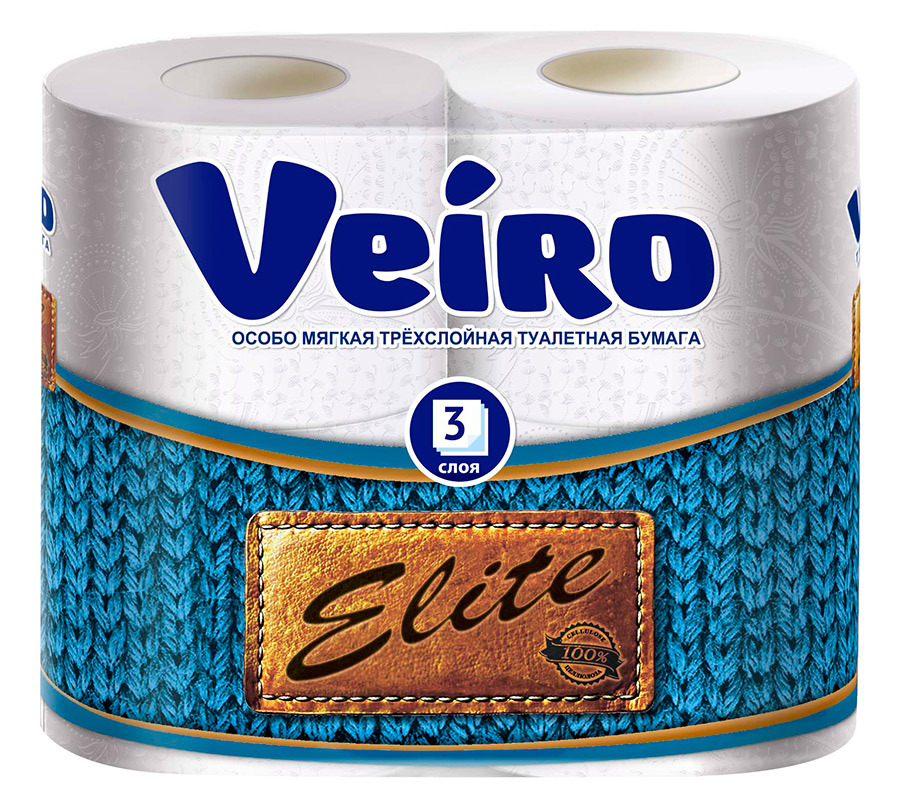Tall and comfortable beds are a common feature of modern plots. When landscaping a courtyard, the rest of the garden, you don't want to have an ordinary vegetable garden - a source of land and weeds. For the owners of suburban real estate, he wants to make it as easy as possible to care for the plants; it is pleasant to enjoy peace at the dacha, and not to work. And yet, their harvests are pleasing. I want organic vegetables and berries.
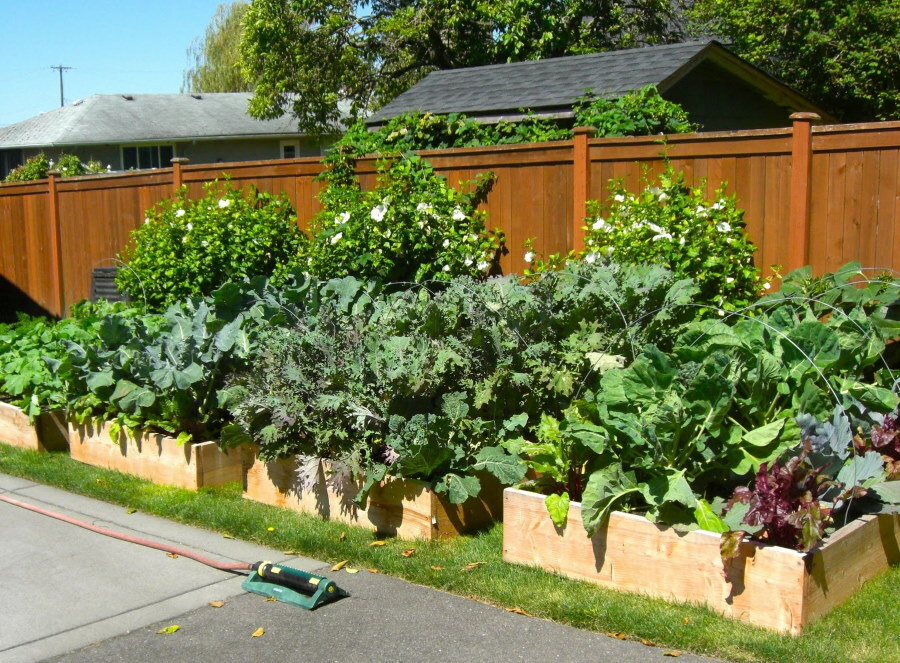
Beds with wooden sides are not only beautiful, but also practical
Smart beds, dressed in a protective box, eliminate the disadvantages of a wild garden. Sowing seeds, weeding in high beds is much easier, the back is not so tired. It is convenient to use mechanization: use a lawn mower, wheelbarrow.
Reasons to choose tall beds - decorative and practical value
Content
- Reasons to choose tall beds - decorative and practical value
- Comparison of popular garden materials - which is better?
- Planks
- Plastic
- Polycarbonate
- Options for the design of beds from boards - how to choose the right boards
- Photo examples of ready-made beautiful beds
- Video: Do-it-yourself budget beds of boards
- Photo of beds from boards
The frame protects against excess dirt. The earth does not crumble, does not stick to shoes when wet, and does not spread along the paths. Structures are quickly assembled, do not affect the composition of the soil. The height of the beds depends on the crops grown. Planting carrots is carried out in a high bed. For leafy vegetables, herbs, vegetable crops that form riding roots, multi-tiered structures that decorate the site are suitable.

Raised beds compare favorably with the classic ones, and it is not at all difficult to make them
Labor costs for crop care are reduced. The beds do not need to be dug up, it is enough to loosen them before planting the plants. If necessary, the soil is fertilized. High beds are especially needed:
- At low groundwater levels, when plant roots are suppressed, root rot develops.
- On infertile land, where there is no need to fertilize the entire plot, it is enough to prepare the land in boxes.
- Problems with the musculoskeletal system, then the load on the spine decreases.
Reliable structures calmly endure wintering, the soil is frozen to the full depth, and disinfection takes place. The substrate thaws quickly in winter, warms up on sunny days. An irrigation system is laid in the frame, you do not need to walk with watering cans. Thanks to this regime, the yield of crops is significantly increased.
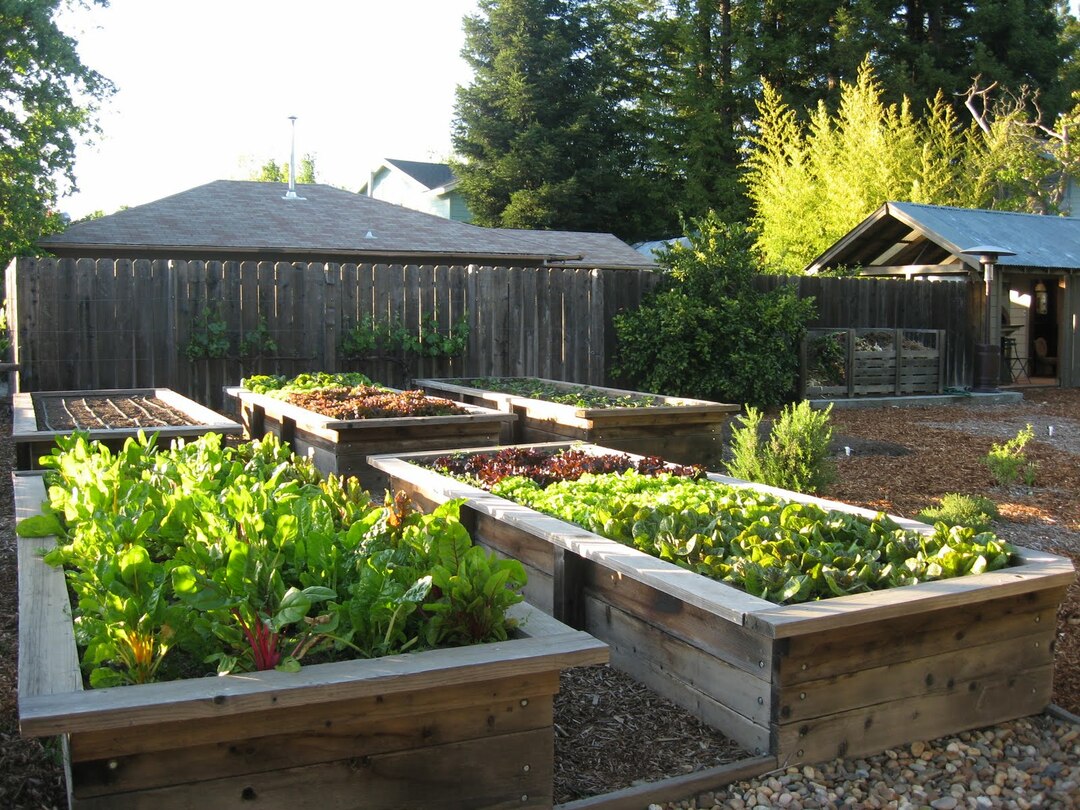
It's nice to admire a neat vegetable garden with even beds
The number of weeds is reduced. Geotextiles are laid between the beds, the grooves are covered with sawdust.
Boxes can be used as greenhouses. Place biofuels on the bottom - rotting components generate heat. Heat-loving crops growing on such a smart bed are not afraid of frost. Without shelter, you can grow cucumbers, zucchini, pumpkins. Mobile film shelters are easily mounted on the frames, which are removed in hot weather.
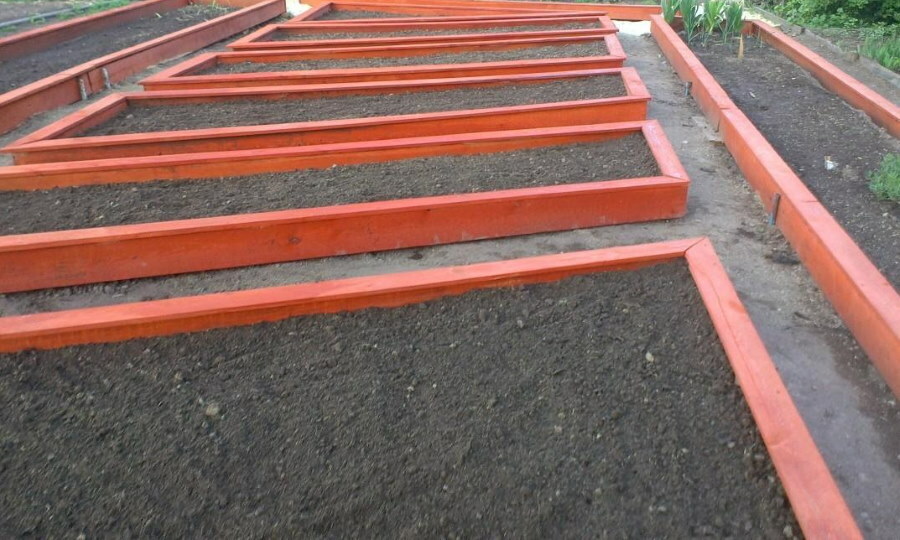
Any type of tree is suitable for self-production of high beds - from slab to timber
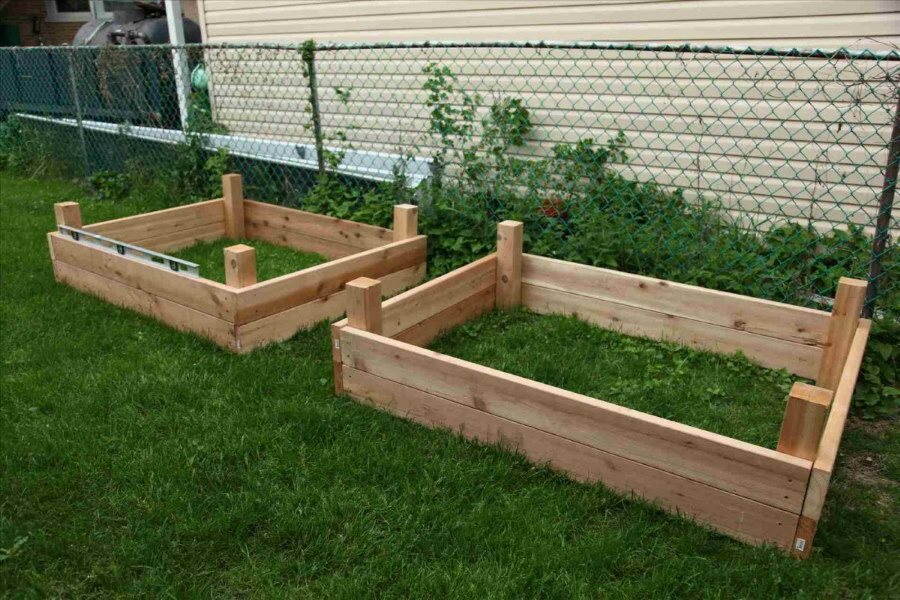
The choice of wood for the beds depends only on what costs you are willing to go for.
Comparison of popular garden materials - which is better?
Fences are created from any available material, including old boards, metal, plastic and glass bottles, polymer boxes, ceramic and silicate bricks or stones. Garden beds made of boards are a traditional design material. Each of the materials has its own advantages and disadvantages in comparison with wood.

From boards and beams, you can make a bed of any shape and size
Planks
Plank beds are not necessarily a natural frame. There are many analog materials in the form of a board or lining. Composite lamellas filled with wood flour and recycled paper are much more practical than wood. The garden will be well-groomed and modern. Lamellas can be painted in the desired color, shortened to size.

Wood is a very popular material for building beds.
The wood must be prepared in advance:
- dry to eliminate deformation;
- soak.
Cutting boards for beds are not recommended to be processed by working off - used machine oil. Components can get into the soil, from there into the plants.
For bed frames, you can use the leftovers:
- sawn timber waste;
- "Substandard";
- pieces of trimmings (a type of slab, suitable for processing).
Wooden fences look spectacular; there are always available tools and tools for making them. Although the ecological material deteriorates over time, it provides reliable protection of the paths from the ground and water.
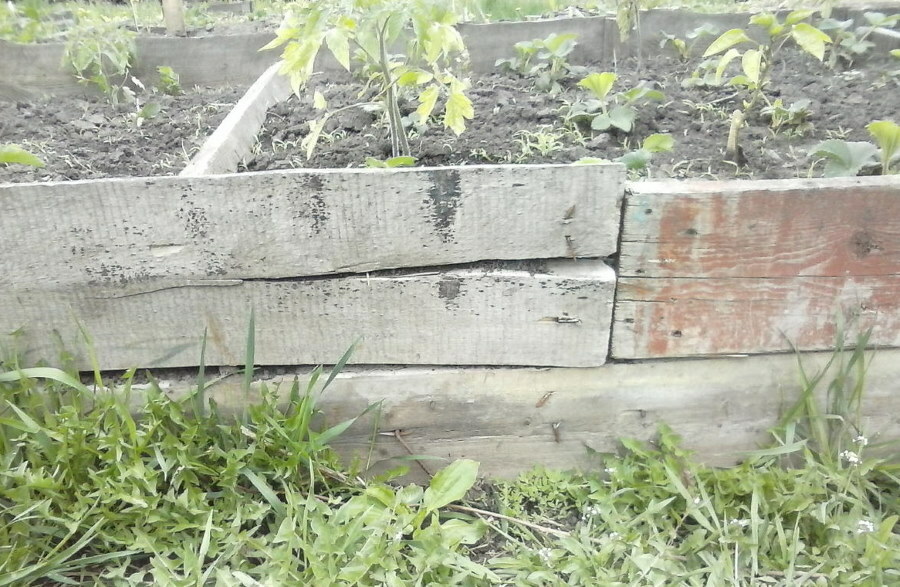
For the manufacture of beds, it is not at all necessary to use exclusively new lumber, boards that have been lying for years under a canopy or in a shed are quite suitable
Plastic
Manufacturers offer a variety of plastic fences imitating popular weaving, bricks, picket fences, board fences. Inexpensive material is durable, unable to rot. This is a good alternative to planks. The plastic is decorative, practical and can be mounted in a lock. The only drawback is the standard format. It is difficult to change the height of structures. Boards in this regard are universal. You can make a structure of any width, height.
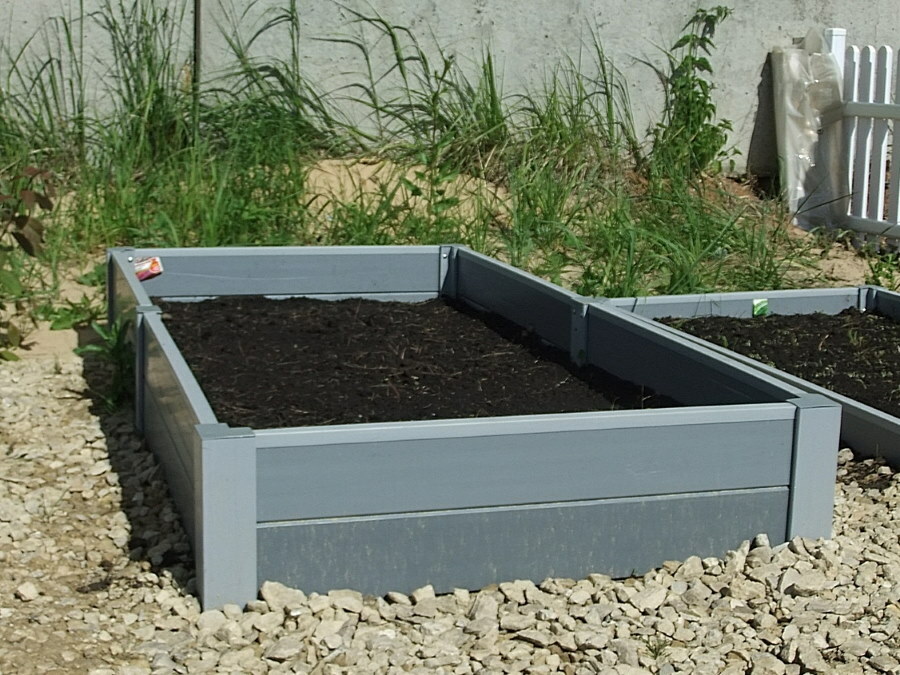
The service life of plastic beds largely depends on the quality of the material used. Good beds can't be cheap.
Polycarbonate
Even the densest polycarbonate is not designed for heavy loads. The material is mainly used for greenhouse beds, curbs. The strips are used to make a weed barrier. Sheets are afraid of frost, become brittle, capable of crumbling from an accidental impact, under a snow load. Polycarbonate is used only for greenhouses. The tree is used in any part of the garden.
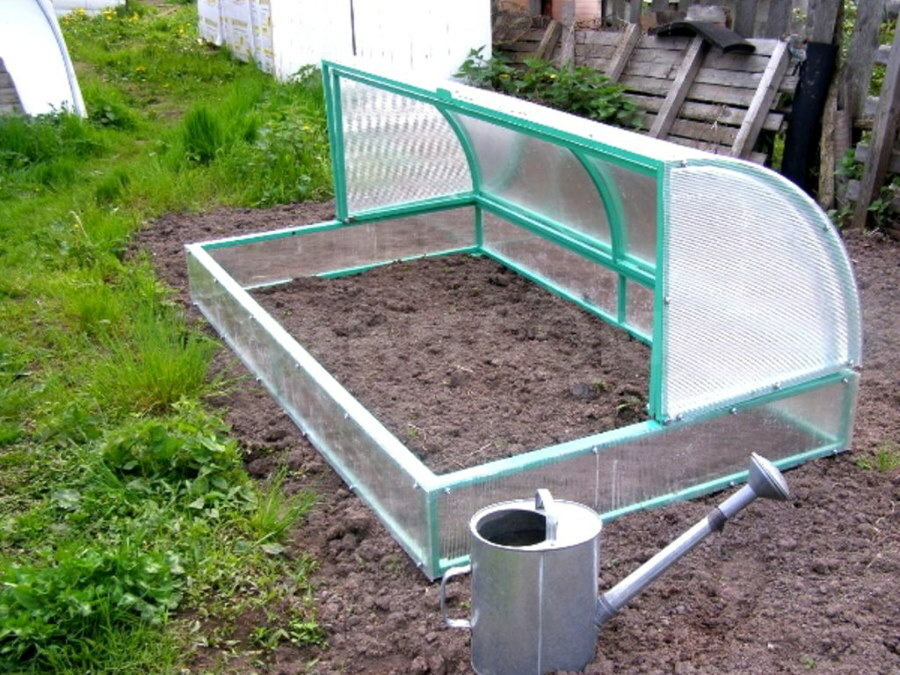
Polycarbonate is more suitable for garden structures that rise above the ground and are not filled with it. With seasonal use, such a greenhouse or greenhouse will last for many years.
Options for the design of beds from boards - how to choose the right boards
Wooden beds are made from commercial wood, scraps left over from construction. The type of breed does not play a special role. You can make barriers from pine, fir, spruce, Christmas tree, hardwood. The main thing is to prepare the boards well, treat them with fungicides, special hydrophobic impregnations, which extend the service life of the building material.
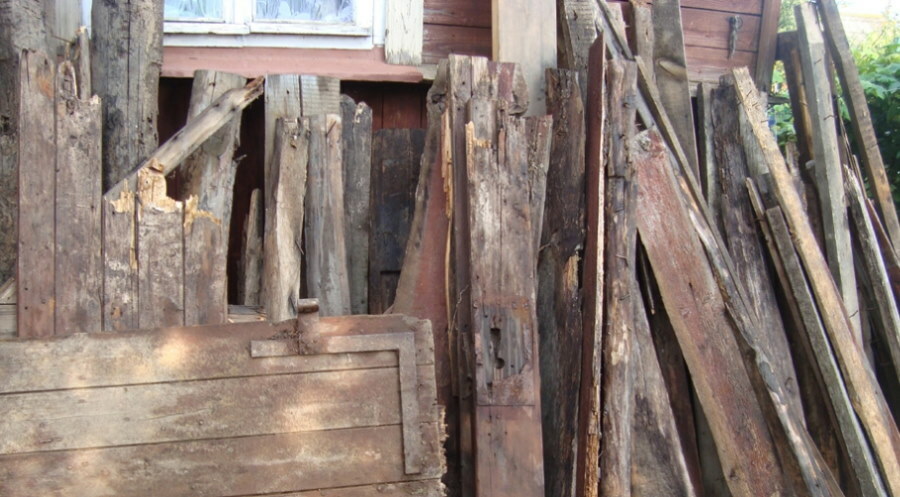
You should not use rotten boards, except that you can choose from them whole short sections for small parts
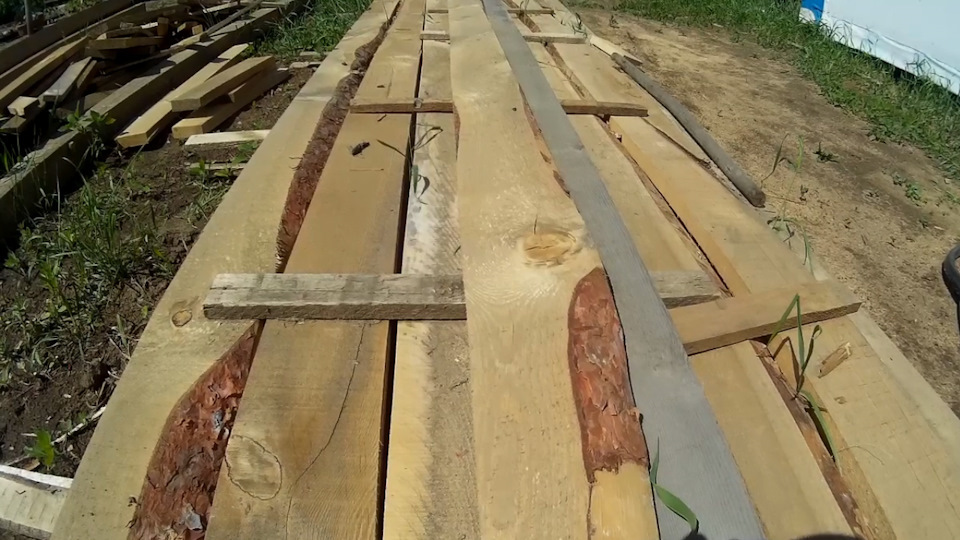
If on the site there was no “own” material for the beds, then it is better to buy low-grade boards, which are much cheaper
For impregnation use:
- ready-made mixtures;
- sunflower oil with alcoholic propolis tincture, mixed in a ratio of 3: 1;
- melted beeswax, the most environmentally friendly processing;
- a solution of copper sulfate used for plant protection, or Bordeaux liquid.

It is advisable to cut the boards before processing - the consumption of the composition will be much lower. The workpieces are covered in 2-3 layers, each time waiting for the surface to dry
You can use fungicides developed to protect plants from fungal infections (the concentration of the solution is increased 5 times from the dose recommended in the instructions).
There are several types of garden beds:
- The box is the most primitive form. Provides flooring inside the frame.
- A container is a more reliable option, a raised box, isolated from the ground. Maximum height 50 cm. The width depends on the number of rows of landings.
- Warm bed - a high box with inner wall insulation, used for greenhouses, which are filled with fresh manure or plant residues for compost.
- Narrow - along the entire length of the greenhouse or vegetable garden, 60–80 cm wide, for two rows of plants.
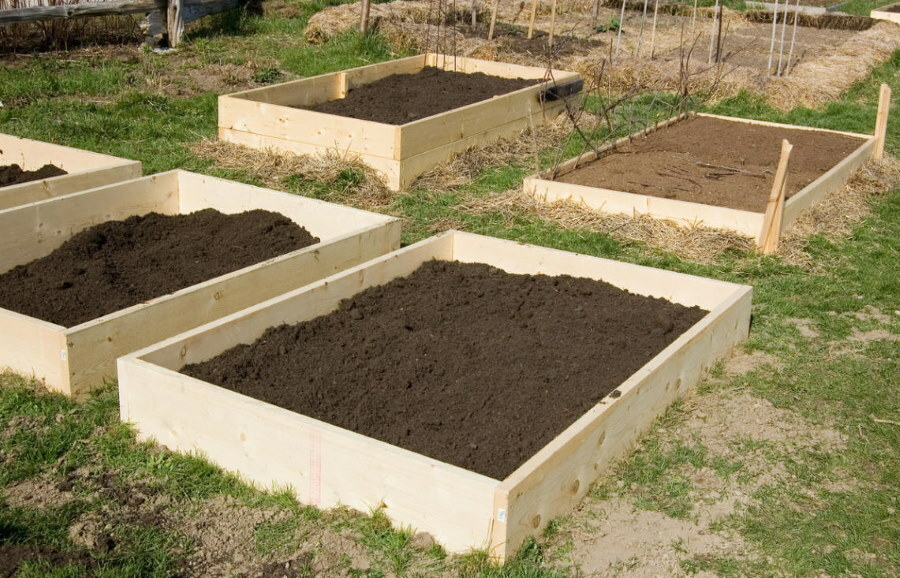
Simple raised beds of thick planks
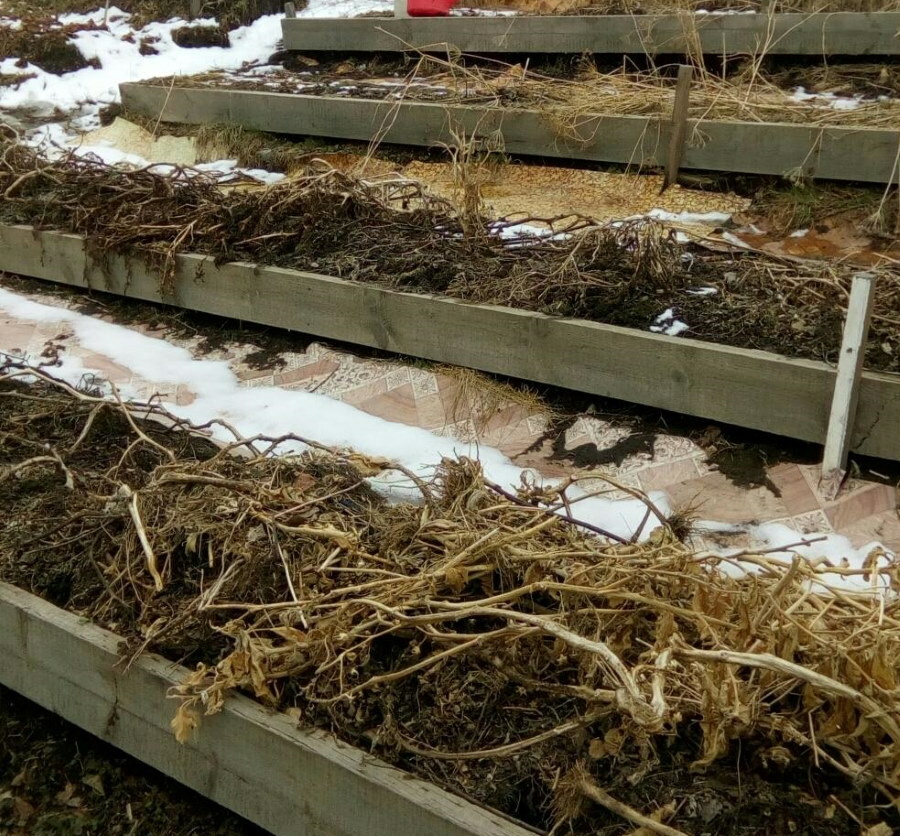
Wooden beds with supports on a slope site
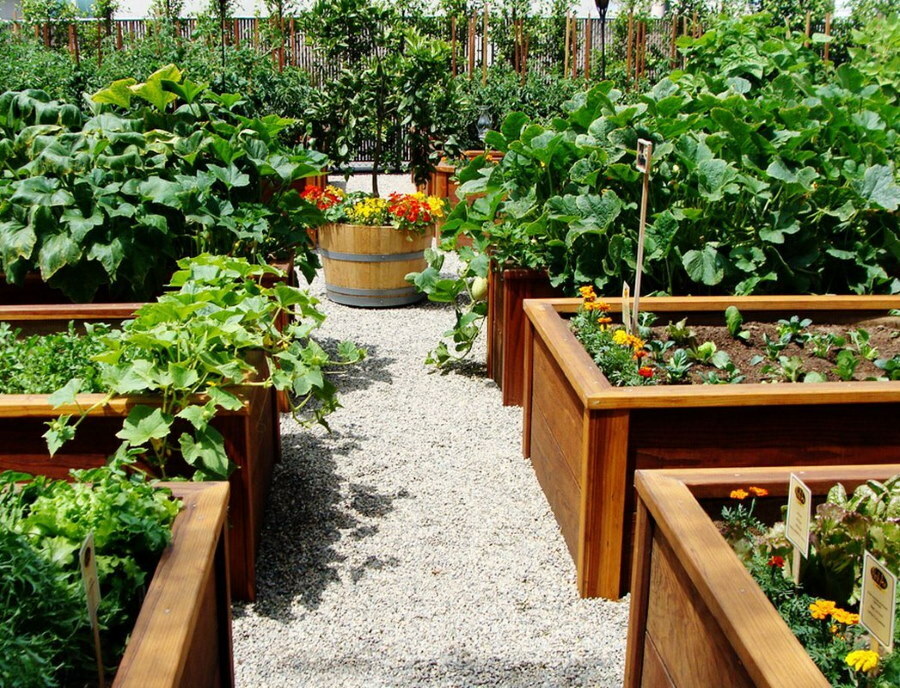
Warm beds with high sides made of thin boards
When forming the frame, it is important to consider a number of points. A small step-by-step instruction on how to make beds in the country from boards:
- Make a markup for the future garden. Outline the configuration (square, rectangle, polygon).
- Collect the frame. The workpieces are treated with moisture resistant antifungal compounds.
- A small chain-link or welded reinforcing mesh is laid on the bottom, this will protect against rodents.
- Inside, a black film is spread on the ground along the perimeter of the curved walls. This is a waterproofing that prevents water seepage during irrigation.
- Installation of an irrigation system. It is advisable to do a drip. The perforated hose is secured along the entire contour.
- Fill the bed with fertile soil.
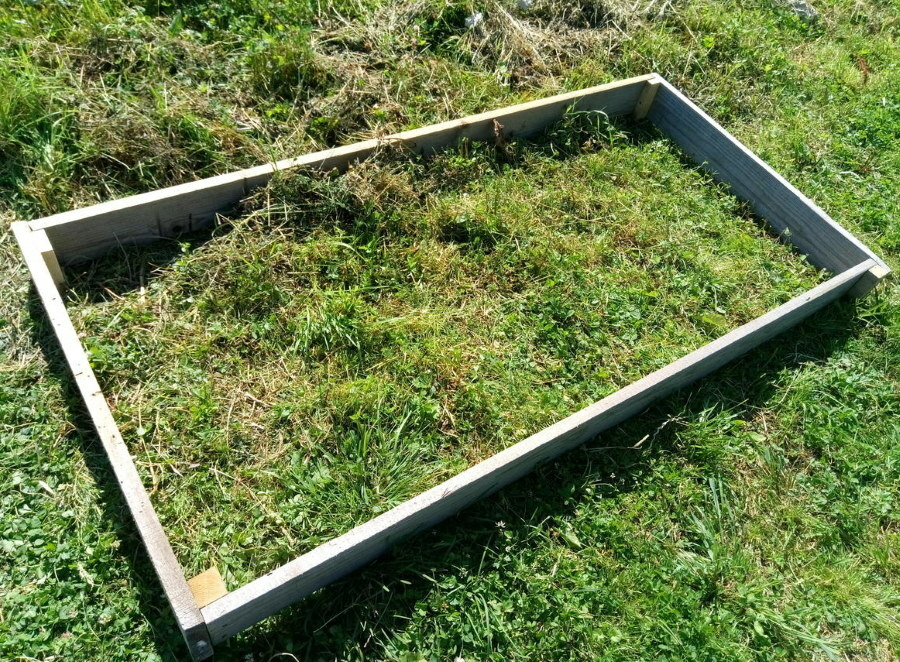
Ready box of a wooden bed
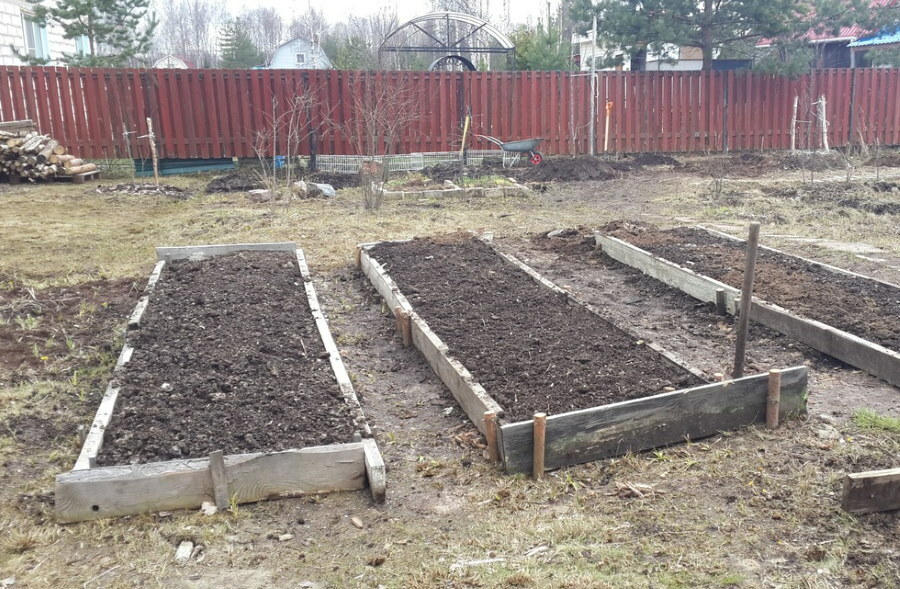
We install the boxes in place and fill with fertile soil
Now you can start planting vegetables, herbs. Flower beds are made in a similar way.
Photo examples of ready-made beautiful beds
For a "smart" garden, vegetable plantings are framed with various materials. Layered and tall beds of wood always look spectacular. It can be not only natural materials, but also a deck board made of wood flour and resins.

A vertical bed that can be moved and placed in any convenient place
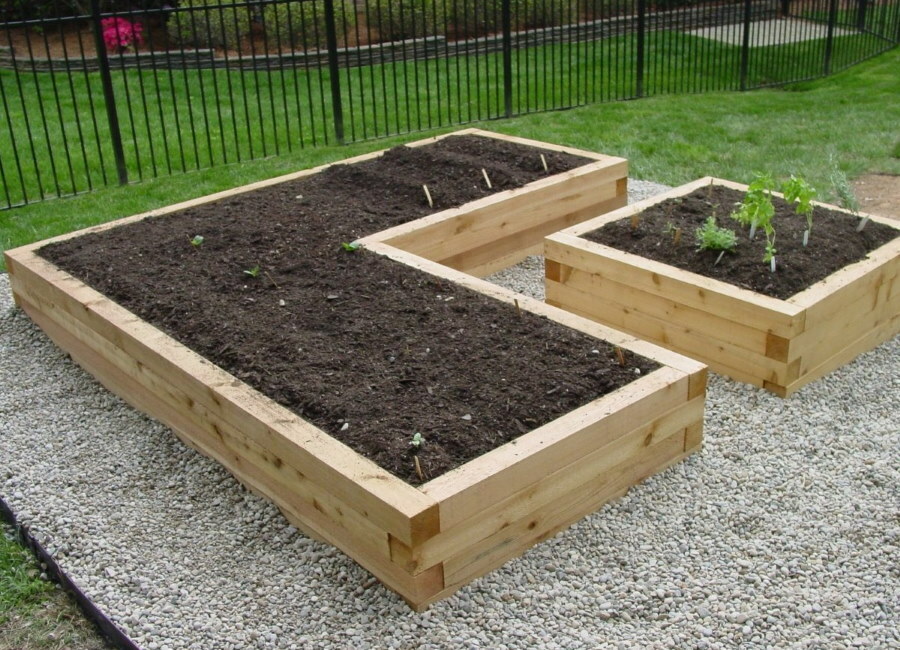
Strong and durable square bar beds
The beds don't have to be boring and monotonous. Custom shape is welcome. Using flexible polymers, they form oval, round, asymmetric flowing shapes. The beds are given the most unusual configuration. Decorative bumpers and borders made of natural stone, pebbles, large rubble save from shedding the soil. The main thing is to show your imagination. Curly ready-made picket fence will help to revive the garden landscape like nothing else.
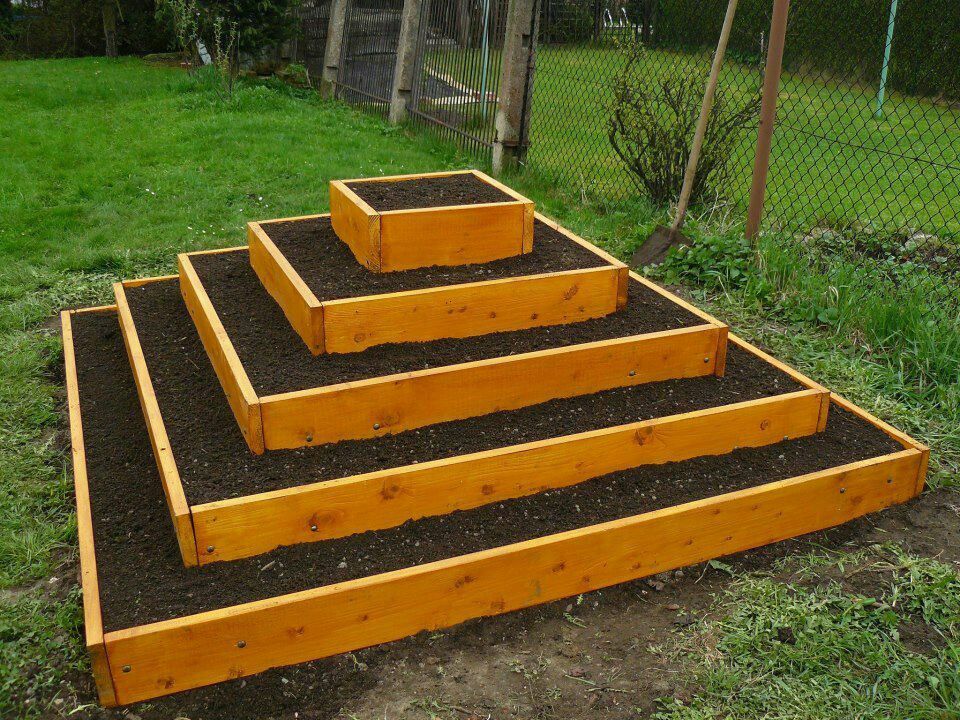
A bed-pyramid of pine boards treated with a protective compound against decay

Multi-tiered bed, assembled from boards without the use of nails and self-tapping screws
The French garden is formed according to the laws of symmetry, the beds alternate with flower beds. The strict layout emphasizes the beauty of the buildings. The classic version is not always appropriate. Nature lovers appreciate the English versions of gardens with a lawn, vertical gardening.


